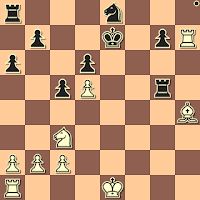In the Jerome Gambit (1.e4 e5 2.Nf3 Nc6 3.Bc4 Bc5 4.Bxf7+), White often finds himself with one, two, or even three extra pawns for the piece that he exchanges.
I suspect that stronger players and chess computer engines would prefer to have the piece, and would see the pawns as targets, especially in the middle game.
On the other hand, I think many club players would prefer the pawns, especially in the middle game - where the "Jerome pawns" can advance ahead of an attack - or in the endgame - where the clock is ticking, and it can be easier to "push a pawn" than position a piece.
The following game is worth playing over several times, to see how White champions the pawns, and how they lead him on to victory.
Wall, Bill - Guest1590349
PlayChess.com, 2020
1.e4 e5 2.Nf3 Nc6 3.Bc4 Bc5 4.Bxf7+
4...Kxf7 5.Nxe5+ Nxe5 6.Qh5+ Ng6
7.Qd5+ Ke8 8.Qxc5 d6 9.Qe3 Nf6 Bill is 9 - 0 from this standard position, which goes back at least as far as Charlick - Mann, corresponcence, Australia, 1881 (1-0, 72); and is as recent as
Cricket334 - zare13, 3 0 blitz, lichess.org, 2020: 10.d4 Rf8 11.O-O
8Kf7 12.Qb3+ Be6 13.d5 Nxd5 14.exd5 Nf415.dxe6+ Ke7 16.Bxf4 Rxf4 17.Qg3 Qf8 18.Nc3 Kxe6 19.Rfe1+ Kd7 20.Qh3+ Kd8 21.Qg3 c6 22.Qg5+ Rf6 23.Rad1 Kc7 24.f3 h6 25.Qg3 Rd8 26.Nb5+ cxb5 27.Qf2 Re8 28.Rxe8 Qxe8 29.Qxa7 Qc6 30.Re1 Rf7 31.Qa5+ Kb8 32.Qd8+ Ka7 33.Re8 Qc5+ 34.Kf1 Qc4+ 35.Kf2 Qd4+ 36.Kg3 Rxf3+ 37.Kxf3 Qf6+ 38.Qxf6 gxf6 39.Re6 d5 40.Rxf6 b6 41.Rxh6 Black resigned; and
Balazs, Ladislav - Cedzo, Adam, SVK-ch rapid, Slovakia, 2020: 10.O-O Ng4 11.Qc3 Qe7 12.d4 Rf8 13.f4 Nxh2 14.Kxh2 Qh4+ 15.Kg1 Nxf4 16.Bxf4 Rxf4 17.Nd2 Rg4 18.Qf3 Qe7 19.Rae1 Be6 20.d5 Bd7 21.e5 Kd8 22.e6 Bb5 23.Qxg4 Bxf1 24.Rxf1 c6 25.Rf7 Qe8 26.Qg3 Black resigned
Bill has previously played 10.d4, 10.0-0 and 10.f3, but decides to experiment in this game.
10.b3 Kf7 11.O-O Re8 12.d3 d5 13.f3 dxe4 14.fxe4 Qd6 15.Bb2 Kg8
Black and White both have made progress. Black has castled-by-hand and executed the pawn break ...d5, opening lines for development. White has maintained his solid, if constrained, pawn center and placed his Bishop on the open diagonal, pointing at the Knight at f6, which is also under pressure from his Rook at f1.Stockfish 11 gives Black an advantage - less than a pawn - consistent with having a piece for two pawns.
16.h3 Nd5
Taking advantage of the pin on the e-pawn to attack the Queen, but nothing comes of it. It was probably better to just develop with 16...Be6.
17.Qd4 Nf6 18.Qe3 Nd5 19.Qd4 Nf6 20.Qxd6 cxd6 21.Bxf6 gxf6 22.Rxf6 Re6
White has created weaknesses in his opponent's position. Stockfish 11 still gives Black a small advantage, but I think many Jerome Gambit players would be comfortable with 3 pawns vs the piece. It is good to watch Bill work with what he has.23.Rf3 Bd7 24.Nd2 Rf8 25.Raf1 Rxf3 26.Rxf3 Kg7 27.Kf2 Rf6
Black is happy to pin the enemy Rook to the King, allowing another exchange (When ahead in material, exchange pieces). He underestimates the activity of the enemy Knight.
28.Nc4 d5
Getting to play ...d5 twice in a double e-pawn game had to feel great. Fearing the loss of his pawn, Black gives it up, hoping to disrupt White's pawn structure.
29.exd5 b5 30.Nd2
30...Ne5Misjudging the position. His Rook is worth preserving, to provide counterplay on the Queen's wing, e.g. 30...Ra6 31.a4 bxa4 32.bxa4 Rxa4 33.c4 Ra2 34. Ke3 a5. With a passed a-pawn, if his King can blockade White's central pawn mass, he might be able to control things to keep the game even.
31.Rxf6 Kxf6 32. d4 Ng6 33. c4 bxc4 34. bxc4 Ne7
An ideal Jerome Gambit endgame - for White.35.Ne4+ Kf5 36.Ke3 Nc8 37.g4+ Kg6 38.c5 Kf7
Can we take a moment to remember the "Killer Shrews"?39.d6 Ke6 40.Ng5+ Kd5 41.Nxh7 a5 42.Nf6+ Ke6 43.Nxd7 Kxd7 44.g5 Black resigned








































